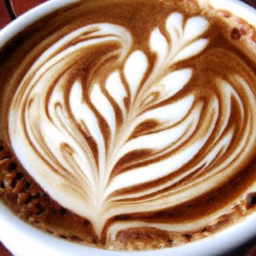Coffee Shop Market Analysis
Imagine you’re sipping on your favorite latte, surrounded by the aromatic blend of freshly brewed coffee and the gentle hum of conversation. From independent cafes that exude charm to bustling chains that cater to busy commuters, coffee shops have become an integral part of our daily routines. In this article, we will explore the ins and outs of the coffee shop market. Discover the trends that are shaping this industry, the demographics that frequent these cozy establishments, and the key factors to consider for both coffee shop owners and coffee enthusiasts alike. So grab your favorite mug, because we’re about to dive into the captivating world of coffee shop market analysis.
Table of Contents
Market Overview
The coffee shop industry has seen significant growth in recent years, fueled by a rising demand for specialty coffee and a shift in consumer preferences towards cafes as social and workspaces. This market overview will provide insights into the current trends, key players, and market size of the coffee shop industry.
Current Trends
One of the prominent current trends in the coffee shop industry is the increasing demand for specialty coffee. Consumers are becoming more discerning about the quality and origins of their coffee, seeking unique flavors and experiences. This trend has given rise to artisanal coffee shops that prioritize sourcing high-quality beans and using precise brewing methods.
Another trend is the growing popularity of coffee shops as social and workspaces. Coffee shops are no longer just places to grab a quick cup of joe; they have become cultural hubs where people gather to relax, socialize, or work remotely. This trend has been fueled by the rise of digital nomads and the increasing popularity of flexible work arrangements.
Key Players
The coffee shop industry is highly competitive, with several key players dominating the market. Starbucks, with its global presence and diverse menu offerings, is undoubtedly one of the most well-known coffee shop chains. Other major players include Dunkin’ Donuts and Costa Coffee, both of which have a strong international footprint.
In addition to these major chains, there is also a thriving market for independent coffee shops. These establishments often pride themselves on their unique ambiance, artisanal coffee, and local community engagement. While they may not have the same resources as the major chains, independent coffee shops can carve out a niche by offering personalized experiences and strong ties to the local community.
Market Size
The coffee shop industry has experienced steady growth over the past decade, with the global market size estimated to be worth over $200 billion. This growth can be attributed to factors such as increasing disposable incomes, the influence of coffee culture, and the popularity of cafes as social spaces. The market is expected to continue growing in the coming years, driven by emerging markets and changing consumer preferences.
Demographics
Understanding the demographics of coffee shop customers is essential for targeting the right audience and tailoring marketing strategies accordingly.
Target Customers
Coffee shop customers can vary widely in terms of demographics, but there are a few common characteristics that can be identified. Coffee shops often attract individuals who appreciate quality coffee, enjoy a relaxed atmosphere, and seek a place to socialize or work. As such, the target customers for coffee shops can include students, professionals, freelancers, and coffee enthusiasts.
Age Group
The age group that frequents coffee shops tends to be broad, ranging from young adults to middle-aged individuals. Younger customers, especially millennials and Gen Z, are particularly drawn to the coffee shop culture, as they value experiences, social connections, and unique offerings. Older customers also form a significant portion of coffee shop patrons, often seeking a comfortable space to socialize or enjoy a quiet moment.
Income Level
Income level is another crucial factor when analyzing the coffee shop market. Coffee shops cater to customers across various income levels, from students on a tight budget to professionals with higher disposable incomes. While some customers may be willing to pay a premium for specialty coffee and a premium experience, others may prefer more affordable options. It is important for coffee shops to offer a range of price points to accommodate different income levels.
Gender
Coffee shop customers are not limited by gender, as both men and women enjoy the experience of visiting a coffee shop. However, certain coffee products or marketing strategies may appeal more to one gender over another. For example, flavored lattes and specialty drinks may be more popular among female customers, while black coffee or espresso-based beverages may be favored by male customers. It is essential to consider gender preferences when developing menu offerings and promotional campaigns.
Competition Analysis
Analyzing both direct and indirect competitors is crucial for understanding the competitive landscape and positioning a coffee shop effectively.
Direct Competitors
Direct competitors in the coffee shop industry are other establishments that offer similar products and services. These can include major coffee chain outlets, independent coffee shops, and even fast-food restaurants that have coffee offerings. It is important to closely study and evaluate the strengths and weaknesses of direct competitors to identify opportunities for differentiation and innovation.
Indirect Competitors
Indirect competitors are businesses or establishments that provide alternative options to coffee shops. This can include tea houses, juice bars, bakeries, and even coworking spaces that offer coffee as a secondary offering. Indirect competitors should not be overlooked, as they can attract potential coffee shop customers with alternative options. Analyzing their offerings and unique selling points can provide insights into potential areas for diversification or improvement.
Competitor Analysis
Conducting a thorough competitor analysis is essential for gaining a competitive edge in the coffee shop industry. This analysis should include factors such as pricing strategy, menu offerings, customer service, branding, and overall customer experience. By evaluating the strengths and weaknesses of competitors, a coffee shop can identify opportunities to differentiate itself and carve out a unique position in the market.
Location Analysis
Choosing the right location for a coffee shop is crucial for attracting customers and maximizing profitability.
Choosing the Right Location
When selecting a location for a coffee shop, several factors should be considered. Firstly, foot traffic is essential, as a high volume of potential customers passing by can increase visibility. Proximity to residential areas, offices, schools, and other businesses can also contribute to a steady flow of customers. Additionally, accessibility, parking availability, and the overall ambiance of the neighborhood should be taken into account.






